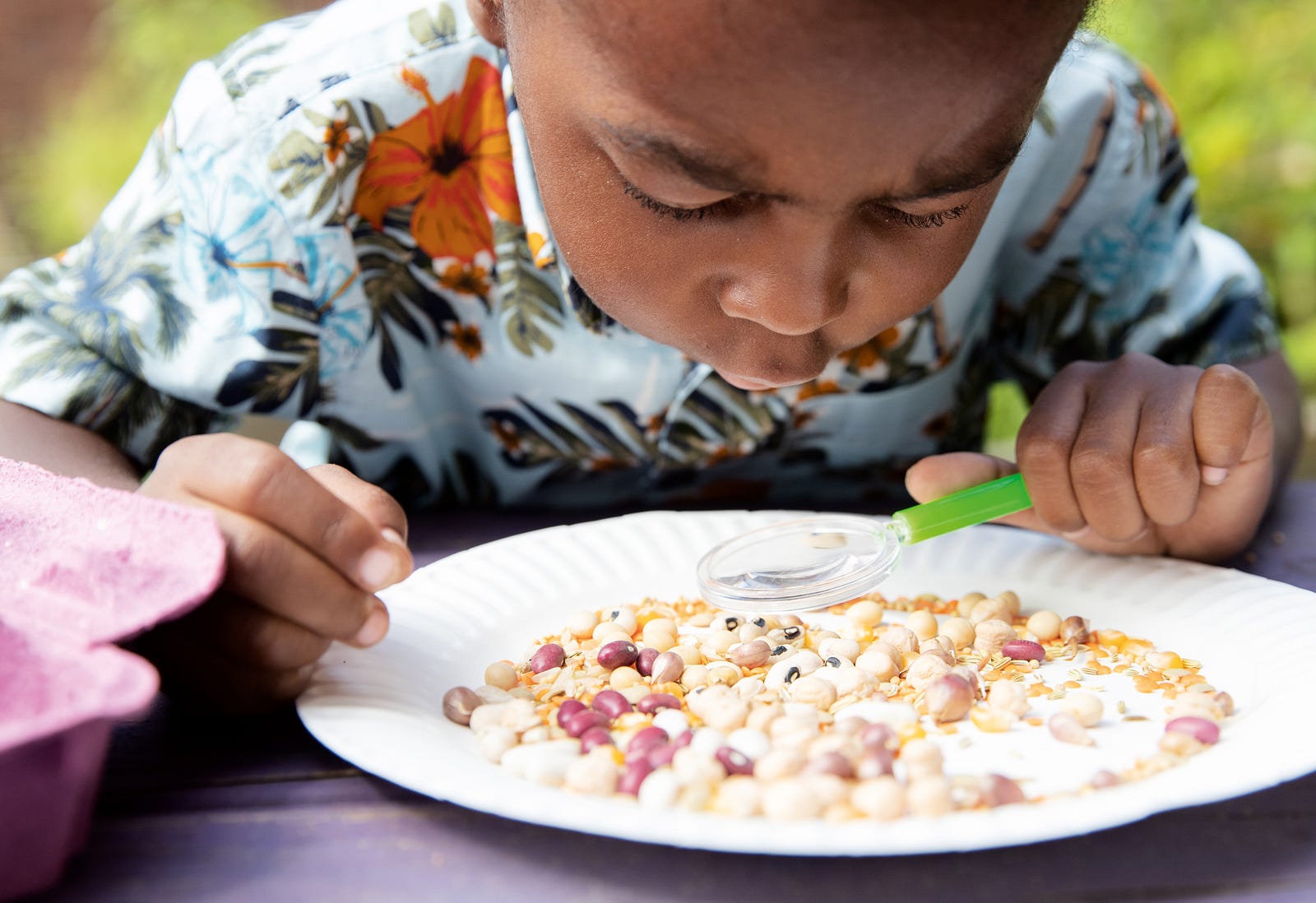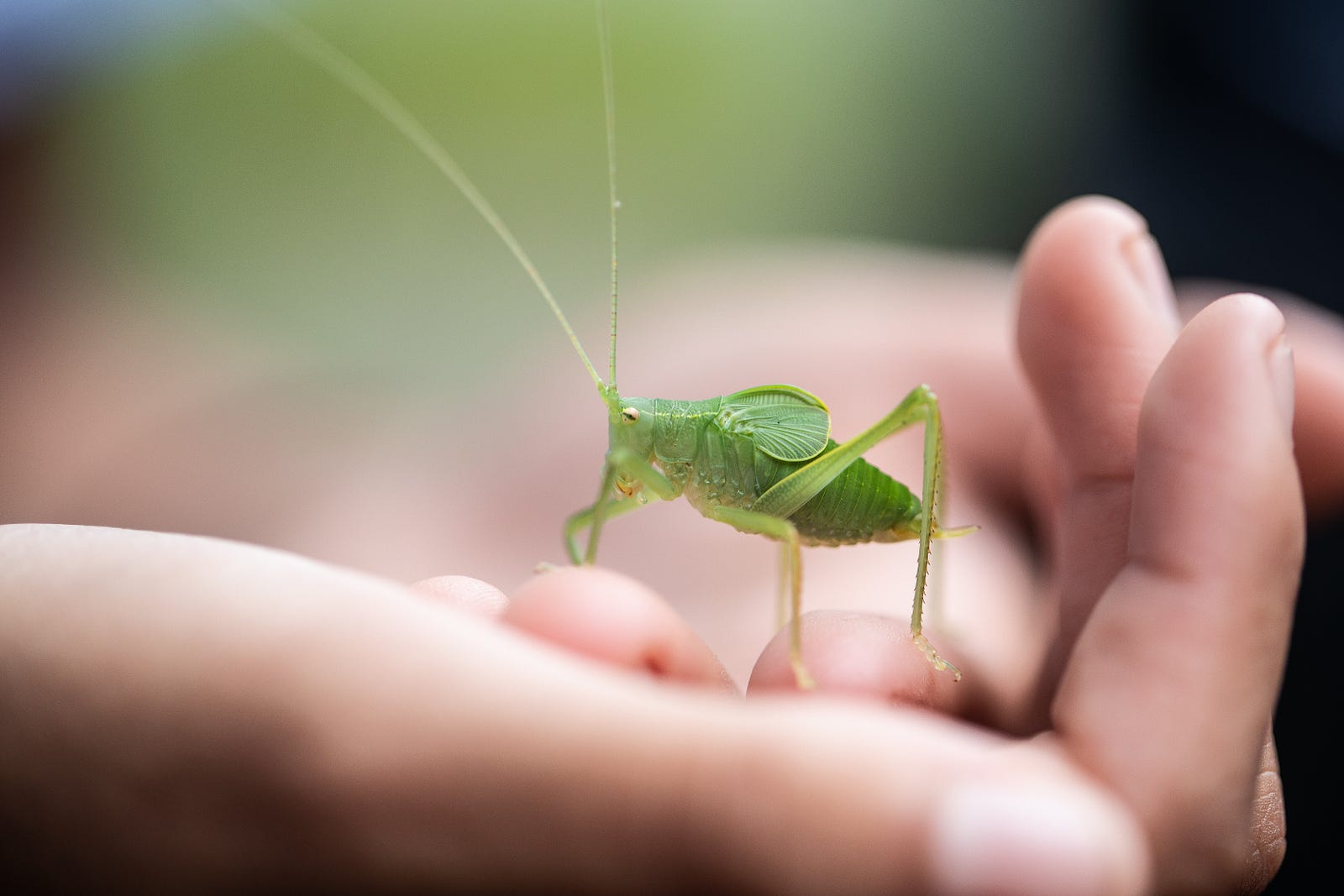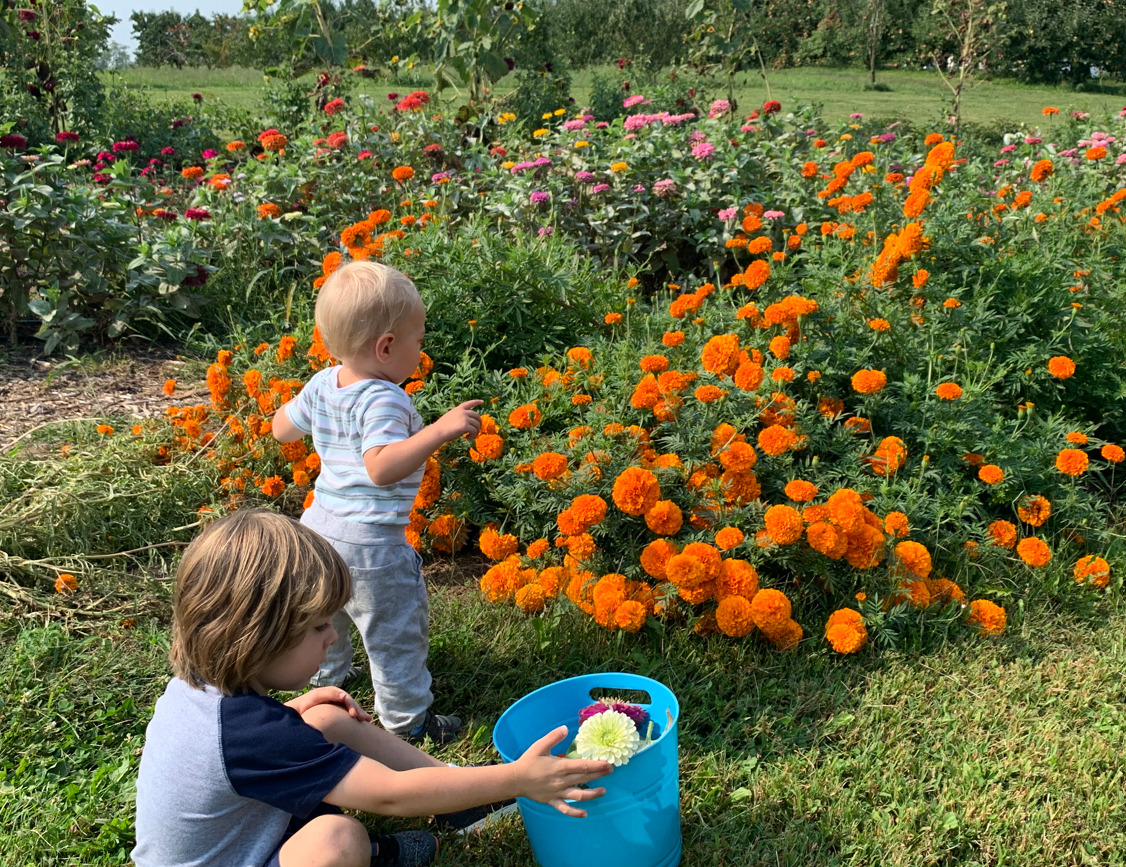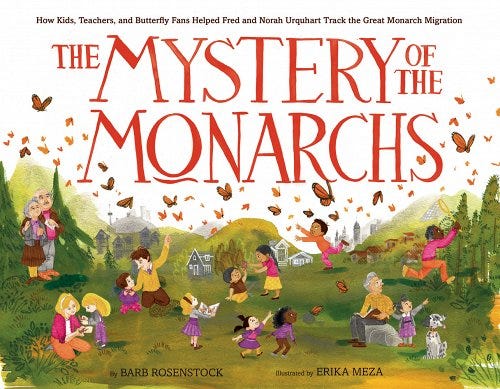I (Linda) enrolled my son in a summer program hosted by our community park’s department in a forest setting. Kyle and his best friend spent their day building forts and hiking the trails. I loved seeing their grubby faces and clothes and hearing about their adventures at the end of each day. I saw how they were immersed in play, learning, and fun. I am trying to recreate these experiences for my grandchildren so that they can enter the world of nature and wonder which their dad was immersed in 30+ years ago.
The children in our families aren’t yet ready to go off to day camp, but they are super excited to get their hands dirty, explore the outdoors, and discover the many living plants, critters and creatures that are all around them. These experiences generate hours of playful learning and can lead to a lifelong interest in science, technology, engineering, and math (STEM).
This blog is about STEM with preschoolers. STEM in the neighborhood, in the backyard, and in the home. For STEM Next Opportunity Fund, adventures in out-of-school-time play a role in helping accomplish its big new moonshot goal of inspiring 20 million more young people with STEM opportunities by 2027.
Here are four ideas to enhance your family’s STEM experiences. We find joy in bringing the simple wonders of STEM to our young children. We hope you will too.

Photo credit: We Garden Together! © by Jane Hirschi and the Educators at City Sprouts. Used with permission from Storey Publishing. Photography by © Kim Lowe Photography
- Discovering the wonders of nature out and about
We were alarmed to learn from the Child Mind Institute that the average American child spends more than seven hours a day in front of an electronic screen, but about 4–7 minutes in unstructured outdoor play. Spending time outdoors has lots of benefits and is a fun and free way for young children to learn and for families to connect. Make outdoor time part of your family’s routine. Leave the devices at home (or at least turned off) on your walks so that you can be present and slow down to the pace of your child.
You might not go far on your walks, but you will be rewarded with closer connections. On our family walks, our children find leaves, rocks, seed pods, pinecones, sticks, and other objects that capture their interest. We stop and look at them and invite questions and observations. Sometimes we leave them where we found them. Other times our children bring them home for further study.
What can you do with the items collected on walks?
You can look more closely at the rocks and leaves and encourage your child to describe what they see. For a closeup look, they can observe them under a magnifying glass and make new discoveries and generate new questions to wonder about.
Rocks offer fun options for STEM play that involves stacking and balancing along with counting and classifying. Kids can make designs and build structures with sticks and playdough and discover how to engineer structures and shapes. For more sticks and stones activities, check out 15 Quintessential Sticks and Stones Activities by Lauren Jannette. We love how simple props like sticks and stones can be revisited over and over again; kids learn through repeated exploration.
For the learning potential of this kind of play with loose parts read Outdoor Play by Rachel McClary. For more ideas on getting outdoors, check out Ideas for Getting Your Kids into Nature by Danielle Cohen. Ideas that resonate with our children include starting a collection, making art projects from what comes home, and identifying the objects that our kids bring home.
2. Gardening for good
Our children love playing with dirt, mud, and water. We love the ideas for expanding their play with these resources that are presented in We Garden Together! By Jane Hirschi and the educators at CitySprouts. The 25 activities in this book are simple to support and revolve around themes of plant, grow, eat, and discover. They are a great way to bring generations together to watch a seed or plant grow.
You don’t need fancy tools or a garden in your backyard to enjoy gardening. You can grow herbs on the windowsill or flowers inside a terrarium. Our local library offers free packets of seeds to grow flowers, fruits, and vegetables just right for our geography.
Composting is another way to allow kids to play in the dirt and learn about the environment. Your guide to composting with kids by National Geographic offers tips for building and feeding a compost bin along with activities to go deeper into the science of composting.
Gardening and composting can be especially helpful for kids who might be reluctant to get dirty. We have heard from some parents that this attitude holds their children back from exploring and playing with different kinds of textures. We call this the “ick factor.” Gardening can help gently introduce these children to becoming more comfortable and confident exploring.
3. Exploring for bugs
While kids explore outdoor life in their yard, on a walk in the neighborhood, or a visit to the park they are likely to find insects. Always support their natural curiosity of these critters, even if your inclination is to shy away from creepy crawlies! We have a handheld net and bug cage that accompany our outside time, allowing the chance to “hunt” for new critters and then make “a home” for them.
Take time to observe each insect and invite your child to make observations and ask questions. Our kids also like making their own critter carriers out of a recycled container or cardboard box for our nightly walks in the neighborhood, allowing added opportunity for building and engineering to occur. At the end of the exploration, let the critters out in places where they can survive.
Check out Science Buddies’ STEM Roundup projects with worms and bugs. We like Drawing Circles around Ants where kids test different household substances like sugar water, lemon juice, vinegar, baking soda, and detergents for acting as ant repellants. On rainy days, you and your child can make insects with playdough and create a scavenger hunt handout for insects for your next walk.
4. Reading together
Reading introduces the wonders of STEM and may even guide children on their path to becoming a botanist, environmental engineer, or inventor. We find great joy reading to our young children. We hope you will too.
To celebrate the joys of dirt and digging read Roy Digs Dirt by David Shannon. For books that celebrate STEM exploration, check out the following books from NSTA’s Best STEM books published in 2022 and 2021. In Our Garden by Pat Zietlow Miller tells the story of persistence and patience as a class creates a community rooftop garden. The Mystery of the Monarchs by Barb Rosenstock recounts how kids, teachers, and butterfly fans helped Fred and Norah Urquhart track the Great Monarch Migration. Maxine and the Greatest Garden Ever by Ruth Spiro shares how two friends use the Engineering Design Process to create a garden as they also develop their friendship.
We encourage you to visit your local public library and enlist the children’s librarian to help find books that match your child’s interest. For more ideas to support reading and STEM, check out our blog, Summertime Adventures in STEM: Inspiring Young STEM Explorers One Book at a Time.
Linda Kekelis: As a parent and now as a grandparent I love experiencing the wonders of STEM with sticks and stones and dirt and bugs. I find satisfaction reintroducing favorite activities that I shared decades ago with my son and discovering new favorites with my grandchildren. These moments not only benefit my grandchildren. They bring joy and connection to nature to me too!
Andria Parrott: As a parent of two preschool-age boys who are never clean, I happily embrace any and all opportunities to be outside. The exploration and adventure that come with a short walk, long hike, or out-of-area trip to nature can never happen soon enough, and it seems we are all our best selves when we’re exploring the outdoors.
STEM Next Opportunity Fund works toward dismantling the opportunity gap in STEM so that all youth can thrive and explore their potential. The Family Engagement Project helps support this mission. STEM NEXT supports family engagement by supporting networks of organizations that offer STEM programs in out-of-school time. With case studies, research-to-practice blogs, and white papers STEM Next highlights promising practices and research.




